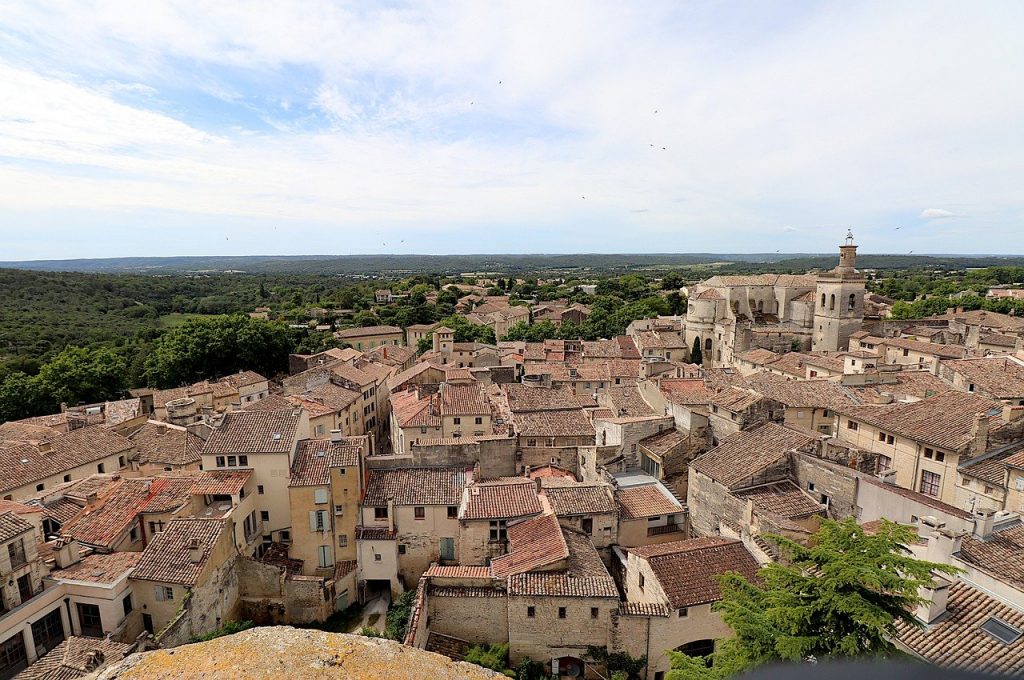SAINT-RÉMY-DE-PROVENCE
In the majestic setting of the Alpilles, between Avignon and Arles, lies a little jewel: Saint-Rémy de Provence. Beautifully restored houses, Renaissance and 18th century mansions, chapels and convents line the small winding streets of the historic centre. Shaded boulevards, squares embellished with old fountains and café and restaurant terraces are all invitations to the Provencal art of living. A beautiful heritage enriched by the archaeological site of Glanum and the Antiques, of which the Arc de Triomphe and the Mausoleum of Julius are the exceptional testimonies of the High Antiquity. The town, which saw the birth of Nostradamus, has been and still is a source of inspiration for many artists. Seduced by the setting and atmosphere of the town, many have taken up residence here and numerous studios and art galleries flourish in the town centre.
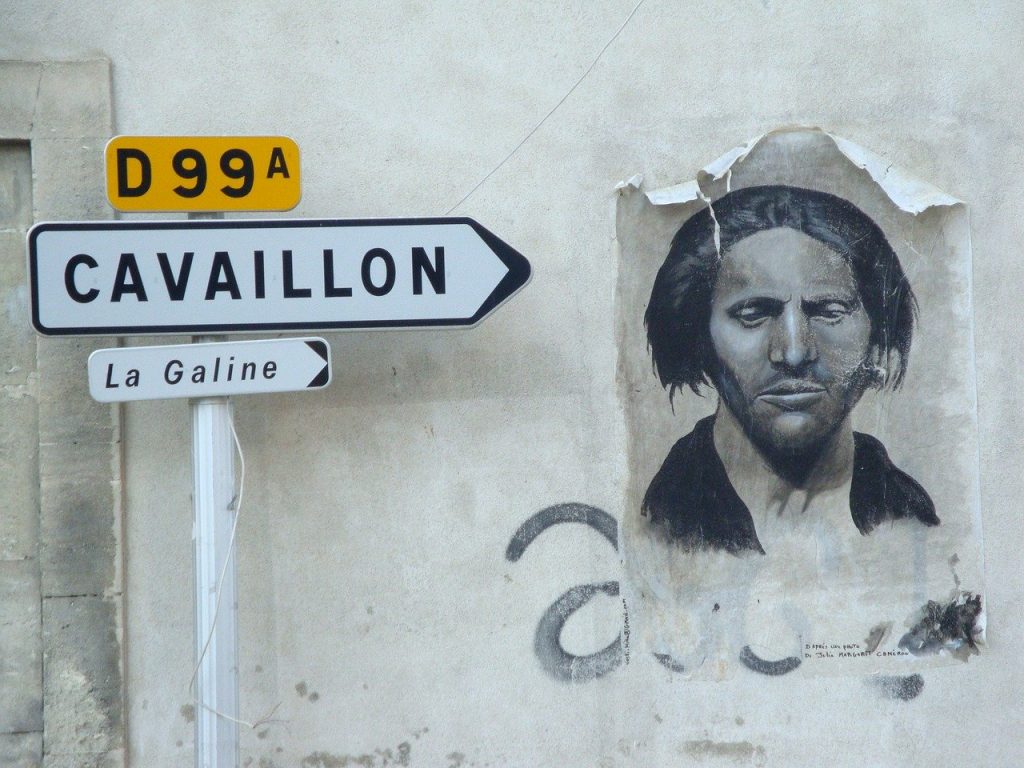
AVIGNON
The historic centre of this former city of the popes is a UNESCO World Heritage Site.
Avignon, a city in Provence in south-eastern France, is crossed by the Rhône. From 1309 to 1377, the Catholic popes took up residence in the city. It remained under papal rule until 1791, when it became part of France. The Palais des Papes, which is located in the city centre, is surrounded by medieval stone ramparts and bears witness to this history.
The historic centre of the city, the Palace of the Popes, the Episcopal complex and the Saint Benezet bridge are listed as World Heritage Sites by UNESCO. Originally the Forum d'Avenio - the Roman city in the 1st century BC - the Place de l'Horloge remains the "centre" of Avignon. Here is the Town Hall, built between 1845 and 1851 on the site of an old cardinal's livery, of which it has retained the old fortified tower transformed into a belfry in the 15th century, as well as the Jacquemart clock. Next door, the municipal theatre, also from the 19th century, houses the Avignon opera and at the top of the square, the pretty Belle Époque carrousel turns.
A meeting place, lined with café terraces and restaurants, the square is always very lively. Just like the Place du Palais above, a vast esplanade taken over in summer by street performers. And as its name suggests, here is the formidable Palais des Papes, emblem of the city and monumental witness to the importance of Avignon in the Christian world in the Middle Ages. Built from 1335 onwards, mainly by two builder popes, the austere Benedict XII and his successor, the much less ascetic Clement VI, the palace would become the largest Gothic building in all of Europe. The visit, which includes the private flats with their fabulous frescoes, is one of the must-sees in Avignon.
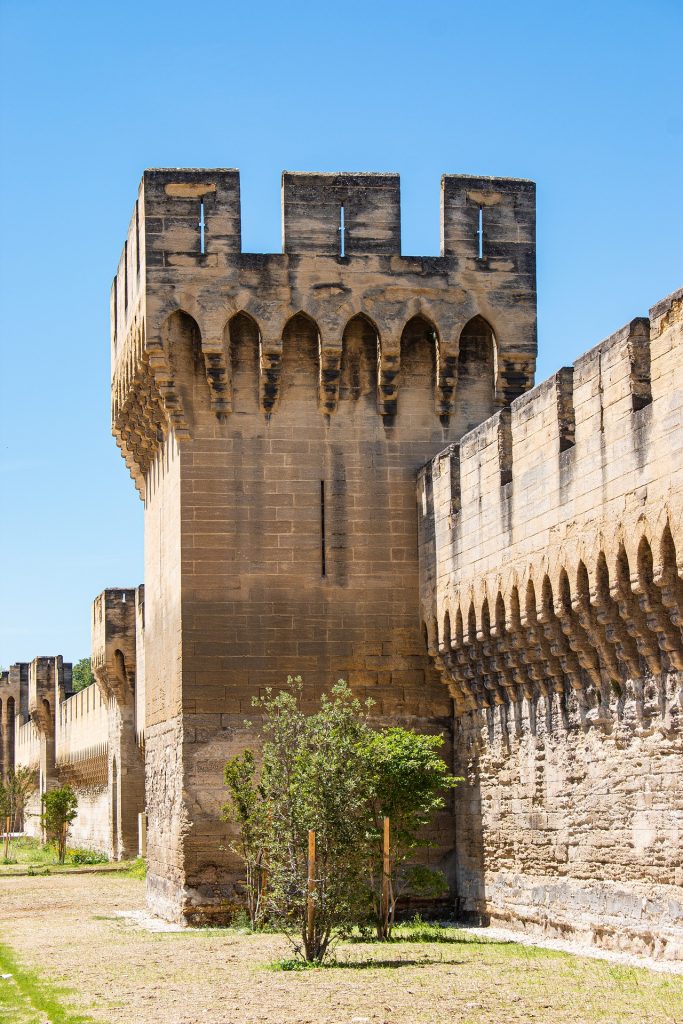
ARLES
City of Art and History rich in ancient remains. Arles is a city located on the Rhône River in the Provence region of southern France. It is famous for having inspired the paintings of Van Gogh, who influenced the contemporary art exhibited at the Vincent Van Gogh Foundation. Once the provincial capital of ancient Rome, Arles is also renowned for its many ruins from that era, including the Arles Amphitheatre, which now hosts plays, concerts and bullfights.
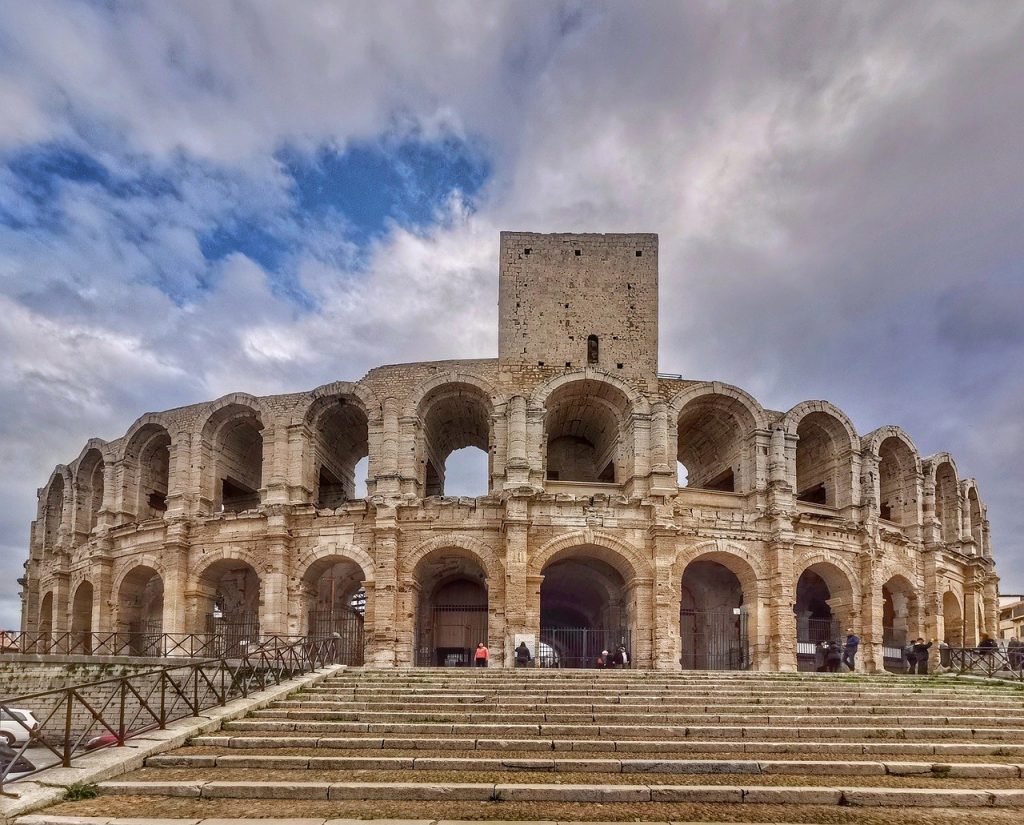
AIX EN PROVENCE
Aix en Provence, here history is the theatre of a daily life where the pleasures of shopping and the nobility of heritage, the happiness of a terrace and the architectural beauties, the strolls in town and the baroque wonders are combined. The squares with their fountains that each have their secret, sumptuous mansions with their stories. Aix-en-Provence is a canvas of happy impressions, in the colours of festivals, celebrations and traditions, gastronomy, markets of Provence, nature walks and leisure activities in freedom. Aix-en-Provence in the colours of Cézanne, an encounter with the painter that you will experience among the places and landscapes that marked his life and his vision. This city in Provence is welcoming in all seasons, and gives you so much to see, feel and discover.
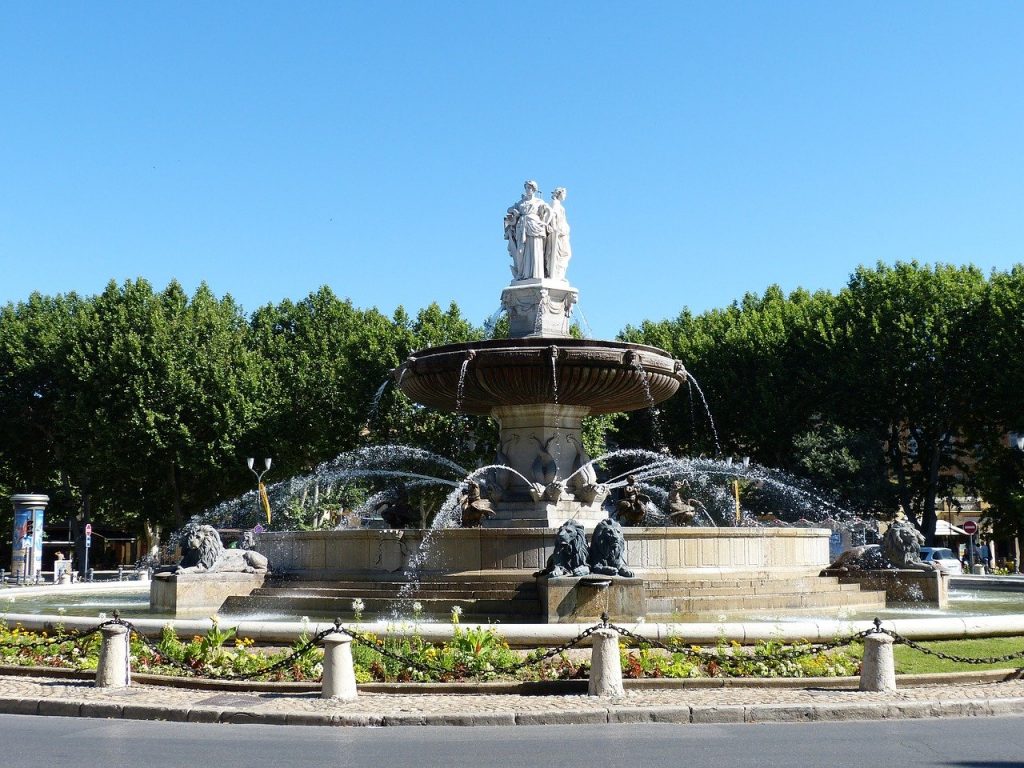
MARSEILLE
Mediterranean city, with its shopping pleasures, its heritage, the pleasure of a terrace with a view of the Mediterranean, its architectural beauties. Marseille with the Old Port, the lungs of Marseille. In the 18th century, the Old Port was at its peak: ships, quays crowded with merchandise, carpenters, sailors, shipowners, convicts from the Arsenal... Fort Saint-Nicolas and Fort Saint-Jean, which protected the entrance to the port and kept an eye on the inhabitants of Marseille. But also its islands, the Goudes, so many things to discover with the flavour of the south.
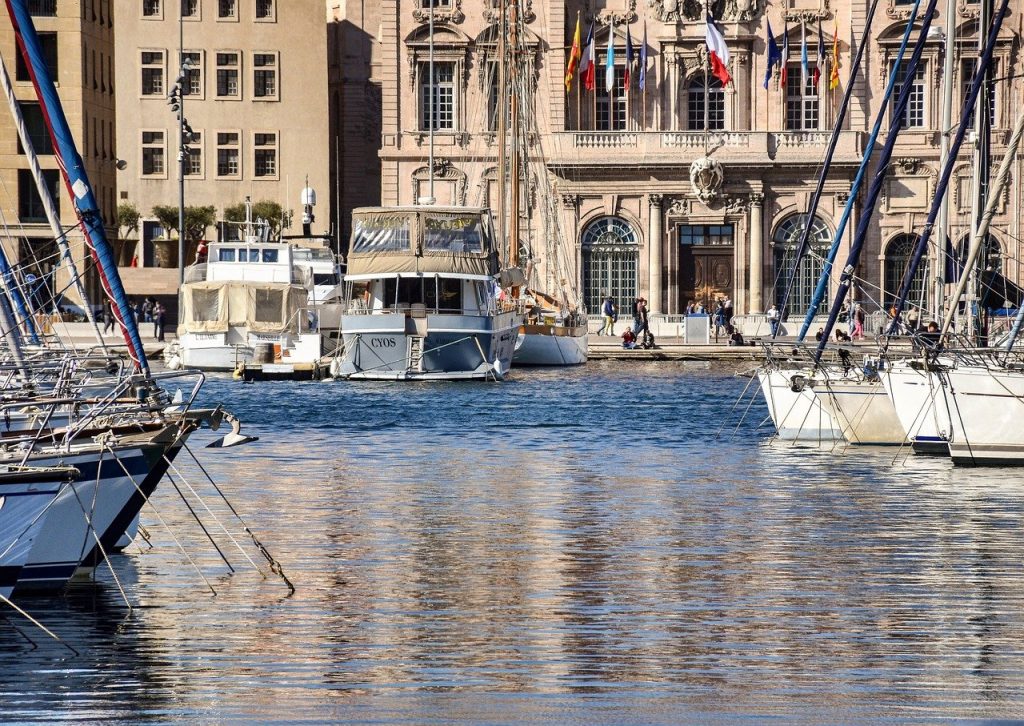
L'ISLE-SUR-LA-SORGUES
Known as the "Venise Comtadine", L'Isle sur la Sorgue is one of the most attractive towns in the PACA region because of its exceptional living environment. It draws its attraction from the Sorgue, a river whose source never dries up, giving the strange impression of a miraculous suspension of time. The antique shops, the boutiques with character, the galleries, Campredon Art Centre, a cultural Mecca, all these ingredients maintain the myth of the "L'Isle sur la Sorgue" phenomenon. Nicknamed "the Venice of Comtadine", L'Isle sur la Sorgue is one of the most attractive towns in the PACA region due to the exceptional character of its living environment. It draws its attraction from the Sorgue, a river whose source never dries up, giving the strange impression of a miraculous suspension of time. The antique shops, the boutiques with character, the galleries, Campredon Art Centre, a cultural Mecca, all these ingredients maintain the myth of the "L'Isle sur la Sorgue" phenomenon.
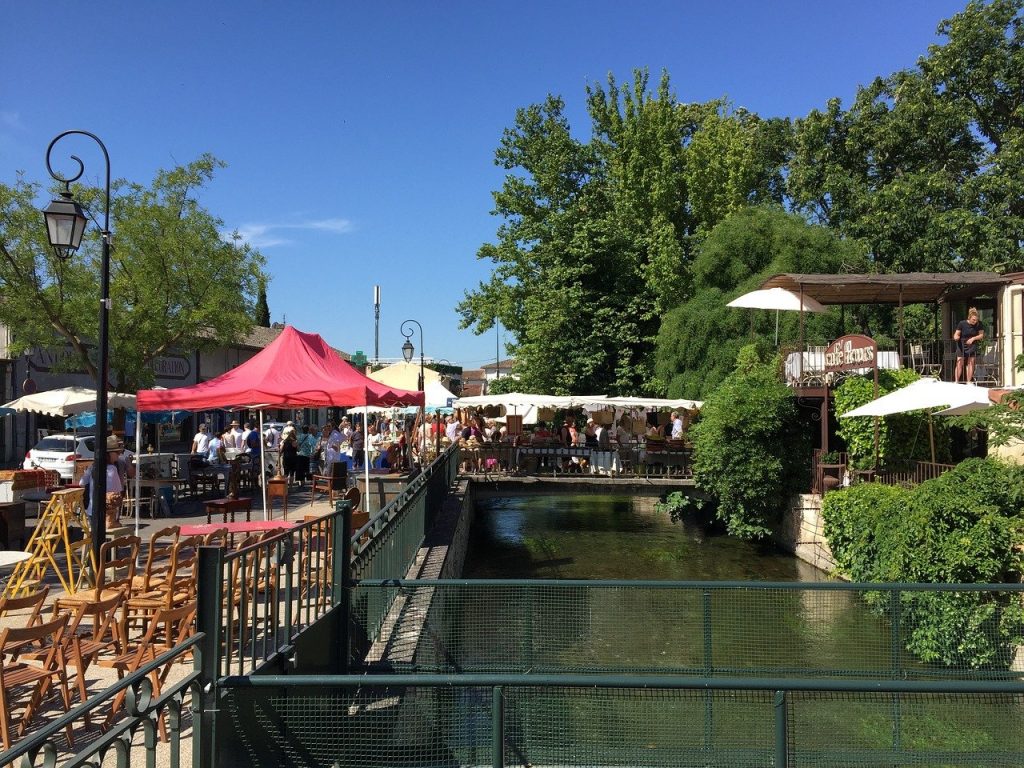
FOUNTAIN OF VAUCLUSE
The commune of Fontaine de Vaucluse nestles around its chasm in a valley at the foot of a cliff in the Monts de Vaucluse. It is indeed the valley that gave the name to the department of Vaucluse - Vallis Clausa or the Close Valley. The small sunny village lends itself well to a little "Sunday walk". At your own pace you can stroll in the coolness emanating from the spring, admire the vestiges and small historical monuments, visit the local craft shops (glass and crystal, stationery, confectionery, jewellery and pottery), the santon eco-museum, or recharge your batteries on the terrace of one of the restaurants or ice-cream parlours after having climbed, gently, up to the source of the Sorgue.
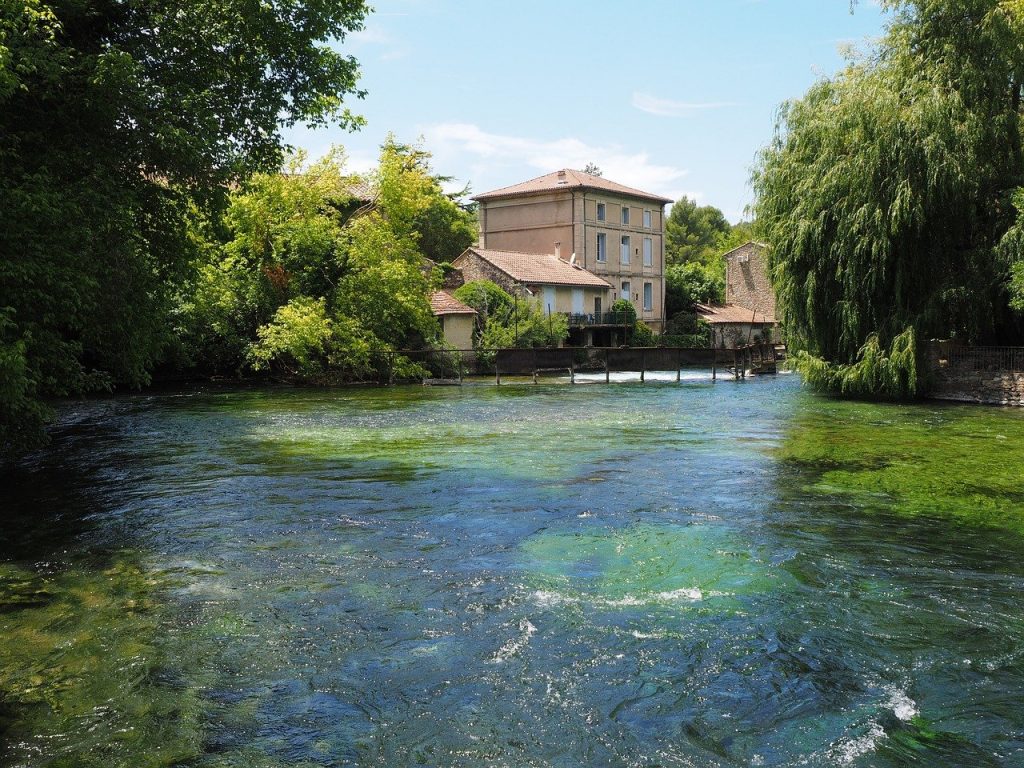
ROUSSILLON
In Roussillon, "the red Delphi" as Jean Vilar called it, the "ochre trail" resembles a painter's palette. To understand the treatment and use of these pigments, a visit to the "Conservatoire des Ocres et des Pigments Appliqués", set up in a former ochre factory, is a must.
Classified as one of the "most beautiful villages in France", this magical site is a picturesque maze of narrow streets and squares. A stroll from the lower town to the top of the Castrum - the castle - and its panorama is a must.
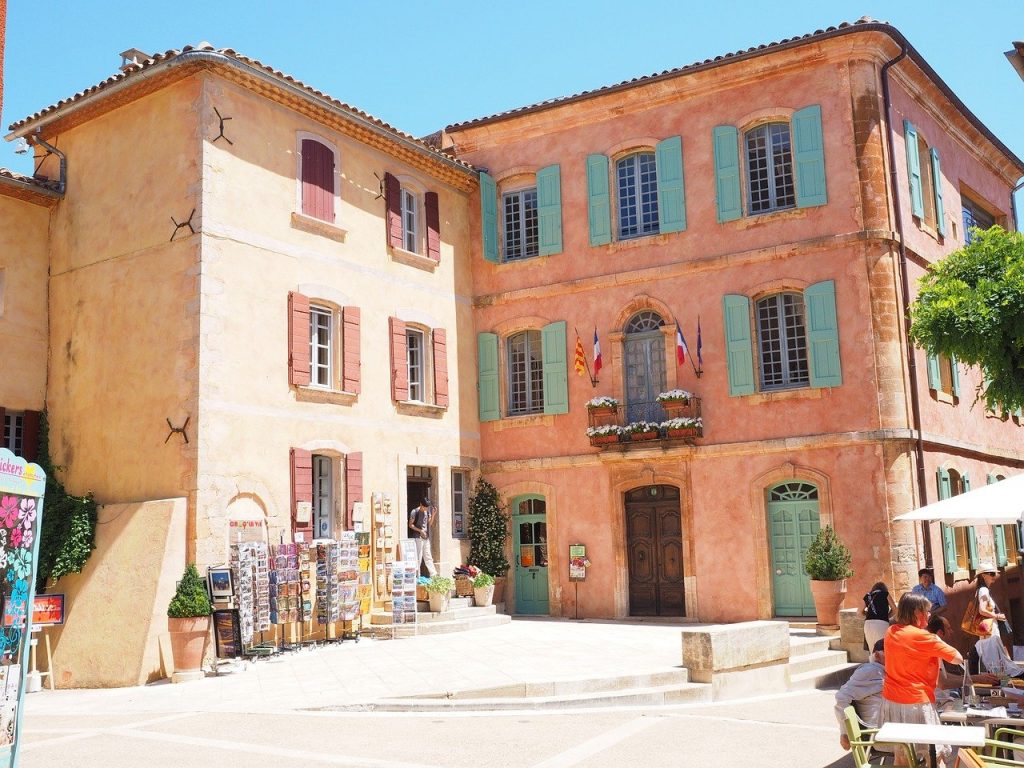
MÉNERBES
At the top of a rocky outcrop overlooking the vineyards, Ménerbes celebrates, through its wine and truffle production, the entire Luberon terroir. From Nicolas de Staël to Peter Mayle, via Picasso and Dora Maar, many artists have been seduced by the gentle way of life in the village.
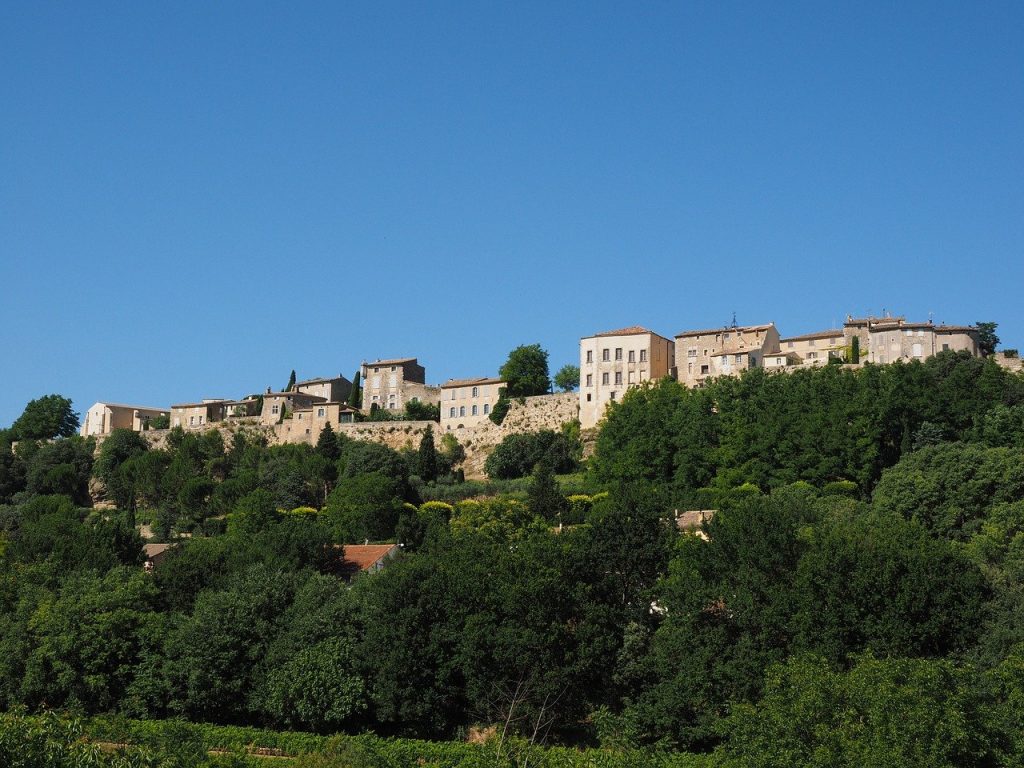
LACOSTE
Discover one of the most beautiful jewels of the Luberon. If you like atypical places full of history, don't miss the old underground stone quarries. You can also admire the belfry with its wrought iron campanile, a 12th century church, an old Protestant temple from the 19th century and many bories, these dry stone huts typical of the South-East.
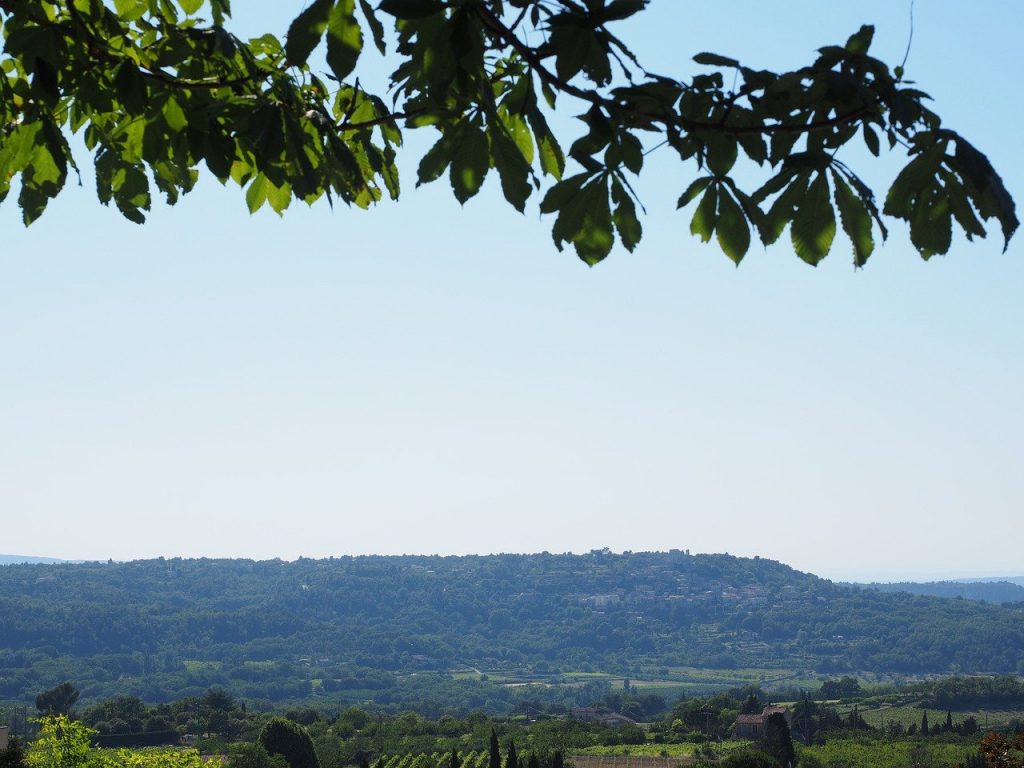
GOULT
The village of Goult dominates the Calavon and Limergue valleys. Skillfully restored with a love of old stones, the village offers beautiful houses with stone and ochre facades. Narrow streets, vaulted passages, arcades and old porches guide the charmed steps of visitors towards beautiful squares in the shade of hundred-year-old hackberry trees. The castle and the remains of the ancient ramparts seem to preserve the art of living and the gentle Provencal soul that reigns in the village.
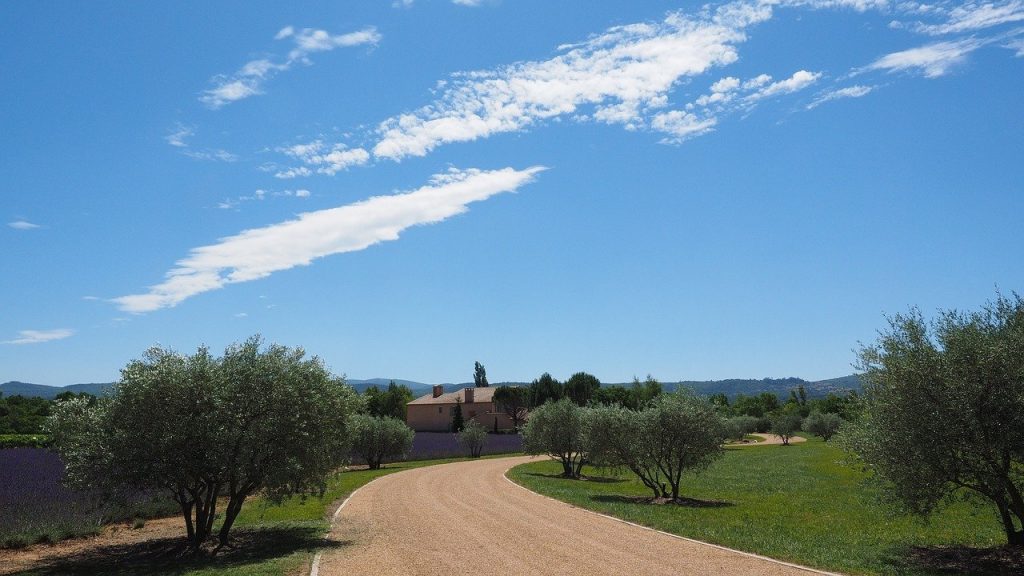
LOURMARIN
Lourmarin is one of the most beautiful villages in France. At the foot of the Luberon, the village is one of the only gateways to the massif, through the Combe de Lourmarin. Lourmarin has the unique charm of the Luberon villages where the calades (paved streets) wind from the belfry to the church, meeting fountains and running alongside rustic stone facades. These streets are regularly animated on Friday mornings by a farmers' market and, occasionally, by stalls of craftsmen
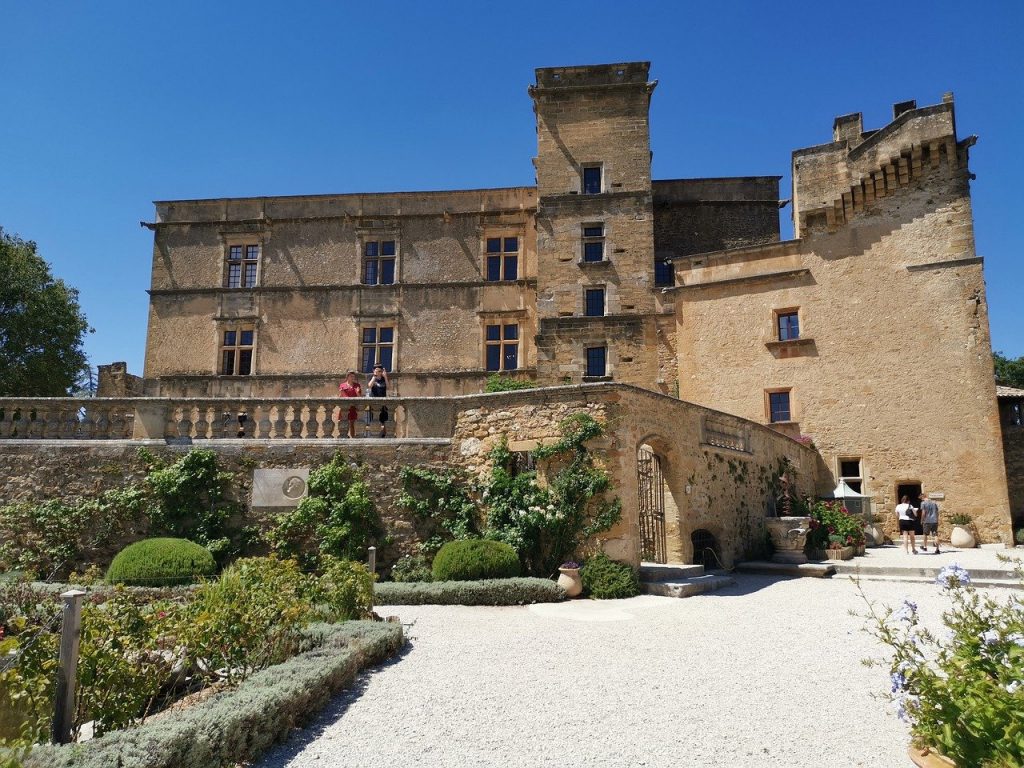
GORDES
A superb perched village in the heart of the Luberon. On the borders of the Luberon Regional Natural Park, in the heart of the Vaucluse mountains, Gordes is the emblem of the Provençal perched village. Described, photographed and admired a thousand times, it owes its aura to the illustrious artists who once revealed it and left a cultural imprint that is still alive today.
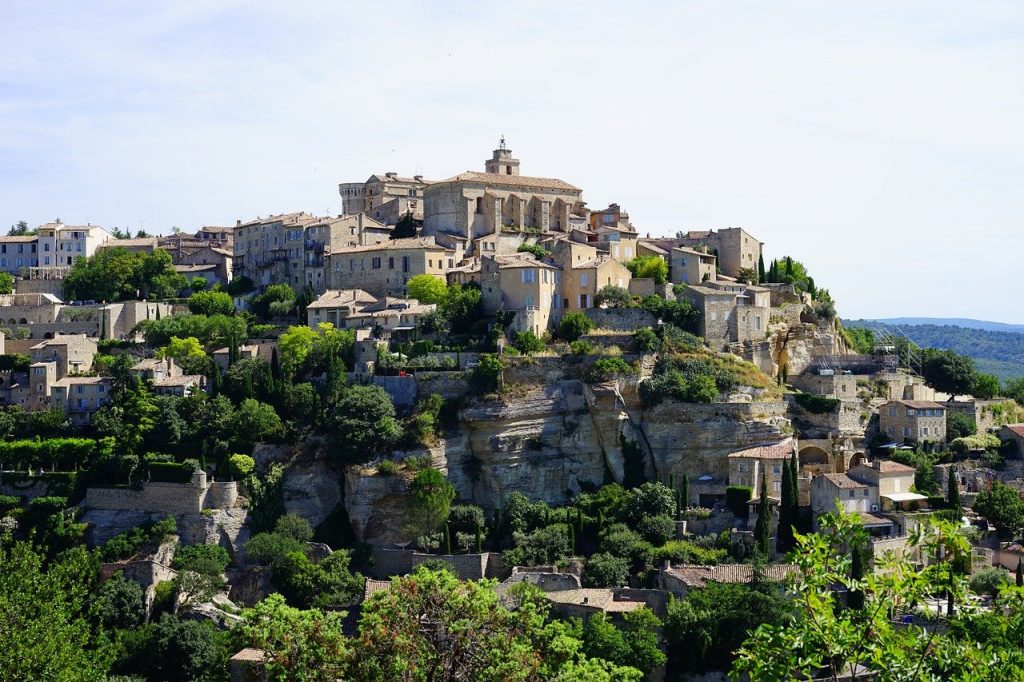
THE PONT DU GARD
The Pont du Gard is located in the heart of a region with a rich historical heritage near Nîmes, Uzès and Avignon. The Pont du Gard is the most visited ancient monument in France and an aqueduct classified by Unesco. It remains one of the great masterpieces of humanity. A marvel of Antiquity, a technical feat, it is also a magical site, which has become wild again since its redevelopment.
It is 48 metres high and has a triple row of superimposed arches: 6 arches on the lower level, 11 on the second and 35 on the third. Its length reaches 273 metres in the upper part (originally 360 with 12 additional arches). It was used until the 6th century, then became a toll house in the Middle Ages, and finally a road bridge from the 17th to the 20th century.
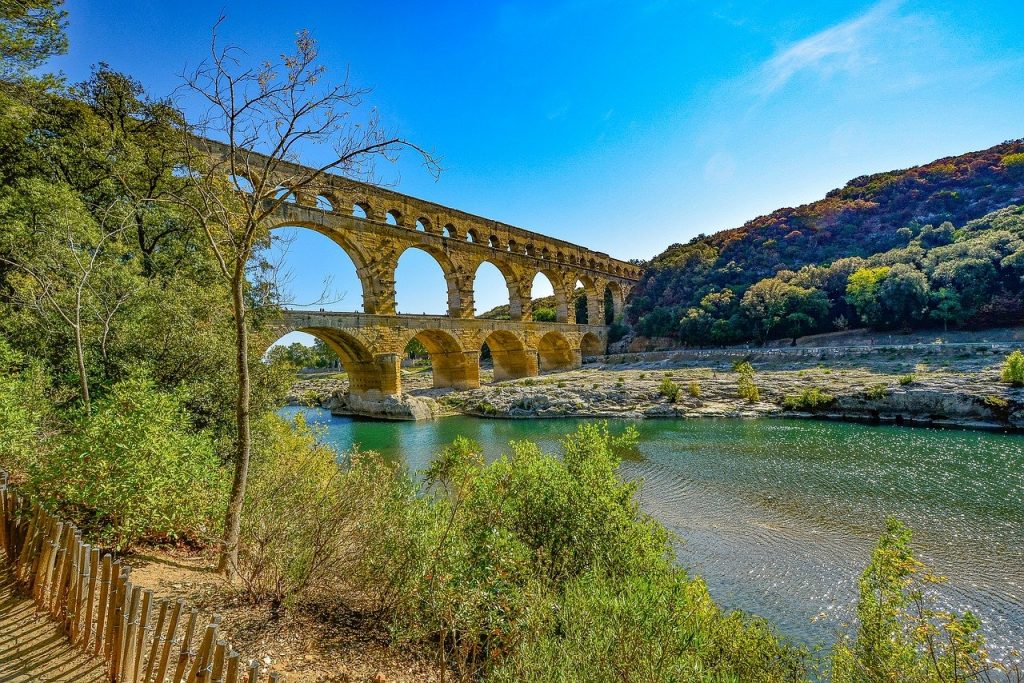
CASTILLON-DU-GARD
Castillon-du-Gard is ideally situated between Avignon, Nîmes and Uzès and is 6km from the Pont du Gard. Perched on a rocky outcrop, the medieval village sits at the end of the Gorges du Gardon. The 13th century village with its cobbled streets and gargoyles, its old watchtower or its Romanesque chapel invites you to discover its past and its architectural heritage.
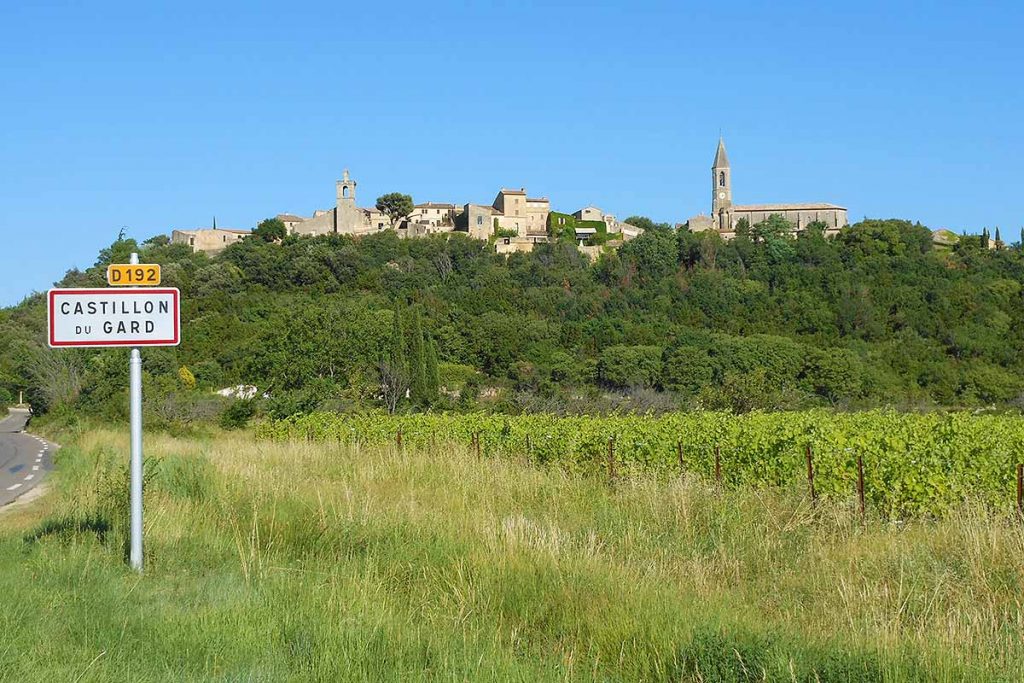
THE REGIONAL NATURAL PARK OF CAMARGUE
The Camargue, a vast wetland area located in the Rhone delta, is an exceptional region: biological wealth, diversity of flora and fauna, variety of landscapes, the grandeur and history of Provencal culture...
From sandy beaches to reedbeds, from rice fields to wheat fields, from salt marshes to the Grande Bleue, the Camargue Regional Nature Park offers visitors many faces. Born from the struggle between the Rhône and the Mediterranean Sea, the Camargue is, from a biological point of view, one of the richest regions in Western Europe. Situated on the migration route of birds from northern Europe to Africa, the Camargue is a major migratory stopover. It is also home to the only nesting place in France for pink flamingos, its world-famous emblem. Pink flamingos, but also bulls, horses, little dukes, gulls, sea swallows, herons, beavers, stilts... a multitude of animal and bird species live in this exceptional territory.
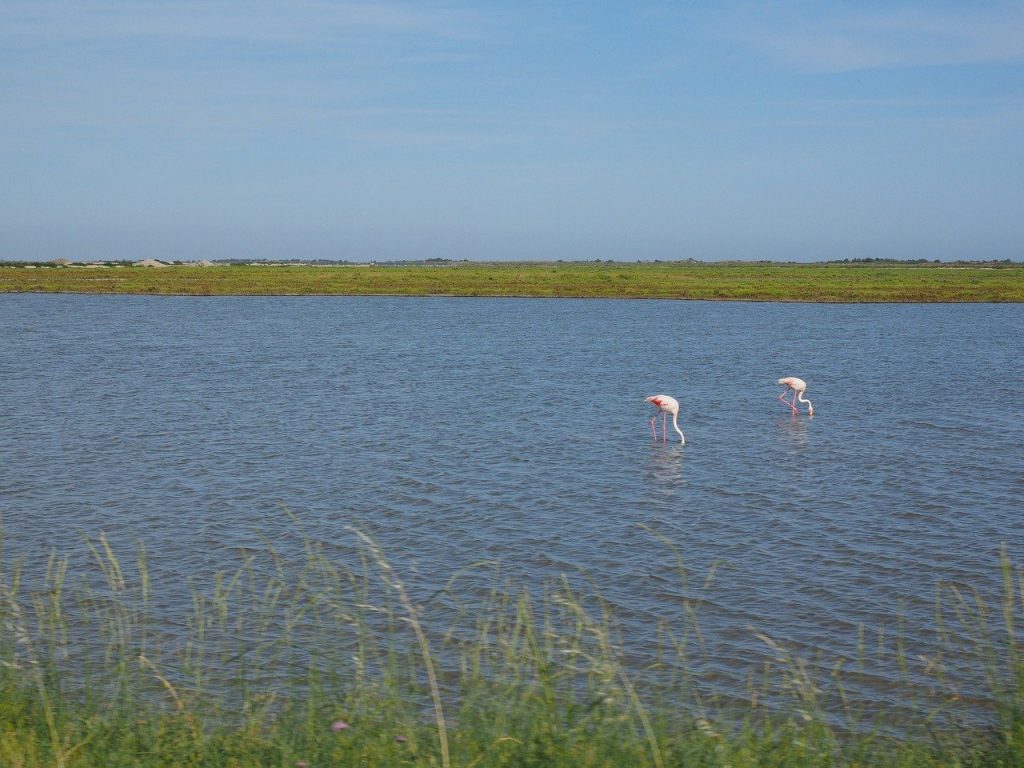
THE ABBEY OF SÉNANQUE
The Abbey of Notre-Dame de Sénanque was founded on the 9th of the calendar of July 1148 (June 23), by Cistercian monks from Mazan in the Ardèche. Notre-Dame de Sénanque is the fourth Cistercian abbey founded in Provence, after Le Thoronet, Aiguebelle and Silvacane...
The Abbey of Notre-Dame de Sénanque has been nestled in the hollow of its Provençal valley since the 12th century and is one of the purest examples of early Cistercian architecture. As it was 900 years ago, the Abbey is home to a community of Cistercian friars who live according to the Rule of Saint Benedict. Seven times a day, the community gathers in the abbey church to pray. The monks of Sénanque, in a spirit of sharing, open the doors of their Abbey to visitors: the visit thus allows visitors to admire the abbey church, the former dormitory, the cloister, the chauffoir room and the chapter house, built in the 12th and 13th centuries.

UZÈS
First duchy of France. Situated in a triangle formed by the cities of Nîmes, Alès and Avignon, the discreet but very elegant town of Uzès has preserved many traces of its rich past. Surrounded by the Boulevard Gambetta, the medieval town is a maze of narrow streets and shady squares lined with 17th and 18th century town houses. Under the arcades of the Place aux Herbes and in the neighbouring streets, a market is held every Saturday, whose reputation has long since spread beyond the borders of the region. You will find a profusion of local products, in the warm and colourful atmosphere of the markets of Provence
